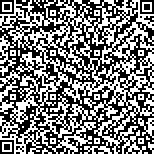|
|
| |
|
|
| 本文已被:浏览 1286次 下载 967次 |

码上扫一扫! |
|
|
| 古今医家诊治郁病的用药规律挖掘整理与分析 |
|
袁捷1, 雷亚玲1, 蔡怡航2, 陈阳3, 王佩1, 韩祖成1
|
|
1.陕西省中医医院, 西安 710003;2.广州中医药大学第二临床医学院, 广州 510120;3.陕西中医药大学临床医学院, 咸阳 712046
|
|
| 摘要: |
| [目的]挖掘和分析古今医家诊治郁病的用药规律。[方法]建立古今医家治疗郁病的数据库,运用相关软件使用频数统计、聚类分析、关联规则等技术进行分析和比较。[结果]1)频数分析:古籍用药频次前10依次是甘草、香附、陈皮、茯苓、川芎、栀子、苍术、半夏、生姜、当归;当代文献依次是柴胡、白芍、甘草、当归、香附、郁金、丹参、白术、茯苓、陈皮。2)聚类分析:古籍文献中黄芩与黄连,青皮与枳壳,白术与人参,白芍与柴胡,香附与川芎,苍术与神曲,茯苓与半夏等各聚为一类。当代文献中枳壳与川芎,白术与茯苓,白芍与当归,郁金与丹参等各聚为一类。3)关联分析:古籍文献主要相关联的药物是香附、川芎、半夏、甘草、茯苓、苍术、陈皮、栀子。当代文献中相关联的药物是柴胡、白芍、当归、甘草、茯苓、香附、白术。[结论]古今医家都认为肝气郁结是郁病主要病机,疏肝理气健脾是主要治法。但古代医家更侧重理气,且用药成分更为丰富,当代医家更侧重疏肝。古代医家以香附、川芎、半夏、甘草、茯苓、苍术、陈皮、栀子为主药,体现了越鞠丸的组方精髓。当代医家则以柴胡、白芍、当归、甘草、茯苓、香附、白术为核心处方,与逍遥散一致。对于郁病的诊治,无论古籍文献还是当代名老中医经验都具有临证参考的价值。 |
| 关键词: 郁病 数据挖掘 古籍 名老中医 文献 用药规律 分析 |
| DOI:10.11656/j.issn.1672-1519.2019.09.06 |
| 分类号:R749 |
| 基金项目:陕西省中医药管理局项目(JCPT018);陕西省科技厅重点研发计划重点项目(2018ZDXM-SF-013)。 |
|
| Excavation and analysis of the medication rules of ancient and modern doctors in treating depression |
|
YUAN Jie1, LEI Yaling1, CAI Yihang2, CHEN Yang3, WANG Pei1, HAN Zucheng1
|
|
1.Shaanxi Province Hospital of Traditional Chinese Medicine, Xi'an 710003, China;2.The Second Clinical Medical School of Guangzhou University Chinese Medicine, Guangzhou 510120, China;3.The Clinical Medical School of Shaanxi University of Traditional Chinese Medicine, Xianyang 712046, China
|
| Abstract: |
| [Objective] To explore and analyze the medication rules of ancient and modern doctors in the diagnosis and treatment of depression.[Methods] Establish a database of ancient and modern doctors to treat depression,and use relevant software to analyze and compare using frequency statistics,cluster analysis and association rules.[Results] First,frequency analysis:the top 10 frequencies of ancient Chinese medicine used were licorice,xiangfu,tangerine peel,medlar,chuanxiong,medlar,atractylodes,pinellia,ginger and angelica;the contemporary literature was bupleurum,radix paeoniae,radix glycyrrhizae,angelica,Xiangfu,turmeric,salvia,atractylodes,medlar,and tangerine peel. Second,cluster analysis:astragalus and coptis in ancient literature,green skin and clam shell,atractylodes and ginseng,white peony and bupleurum,fragrant and Chuanxiong;atractylodes and divine comedy,Fuling and pinellia. In the contemporary literature,clams and chuanxiong,atractylodes and poria,Baizhu and angelica,Yujin and salvia were clustered together. Third,correlation analysis:the main related drugs in ancient books are Xiangfu,chuanxiong,pinellia,licorice,medlar,atractylodes,tangerine peel and medlar. The related drugs in the contemporary literature were bupleurum,angelica,licorice,poria,Xiangfu,and atractylodes.[Conclusion] Ancient and modern doctors believe that liver qi stagnation is the main pathogenesis of depression,and it is the main treatment for tonifying the liver and strengthening the spleen. However,ancient doctors pay more attention to qi,and the ingredients are more abundant. Contemporary doctors only prefer to soothe the liver. The ancient doctors used Xiangfu,Chuanxiong,pinellia,licorice,medlar,atractylodes,tangerine peel and medlar as the main medicine,reflecting the essence of the prescription of Yueqi Pills. Contemporary medical doctors use bupleurum,angelica,licorice,poria,Xiangfu and atractylodes as the core prescriptions,which are completely consistent with Xiaoyao San. For the diagnosis and treatment of depression,both ancient literature and contemporary Chinese and traditional Chinese medicine experience have the value of clinical reference. |
| Key words: depression data mining ancient book famous old Chinese medicine literature medication rule analysis |
|
|
|
|
